
All About Coarse Material Washing
Coarse material consists of rock, stone, gravel and other hard minerals larger than ¼” (6 mm) that are processed for use in a variety of aggregate and minerals applications. This material may contain contaminants such as crusher dust, soluble mud, or tough, sticky clays, which can make the material out of specification if it is not removed. Clean stone is required for concrete and bituminous pavement specifications. For various ores, higher mineral purity is often required for further refinement or downstream processing.
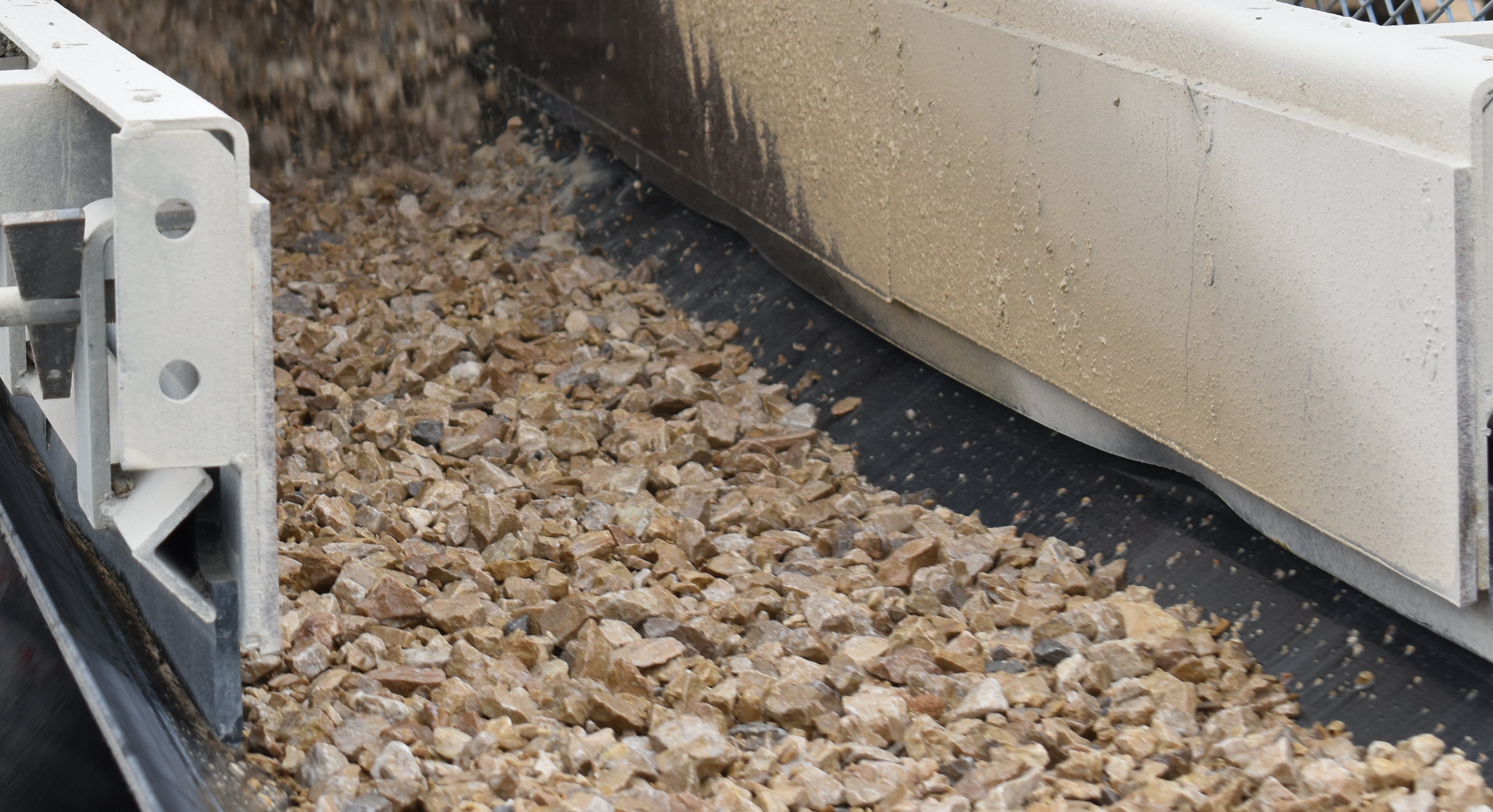
Just rinsing the rock, stone, gravel or minerals may not be enough to sufficiently remove the contaminants to meet the required specification. This is where coarse material washing comes into play.
Coarse Material Washing Options
There are several different equipment options and processes available for washing coarse material. The appropriate machine for the job is dependent on the type of contaminant and the amount of contamination.
Vibrating wash screens are typically first considered for making clean material. While they may work for some applications, they are not necessarily the best option for making a clean rock or stone if tough contaminants are involved.
Coarse Material Washers and Blade Mills are ideal for water-soluble contaminant removal, as are rotary scrubbers, which have the added advantage of being able to accept large feed sizes and handle high capacities.
For removing high plasticity muds and clays, Sol-Clay Washers and Log Washers are best used, though Log Washers are reserved more for removing the toughest, highest plasticity clays.
When considering what equipment is required, an examination of the contaminant issue is necessary. A simple overnight soak test of your material can give you some insight into the material’s water solubility. Equipment dealers and manufacturers will often require a sample of the feed material to be analyzed to determine the appropriate machine for the job.
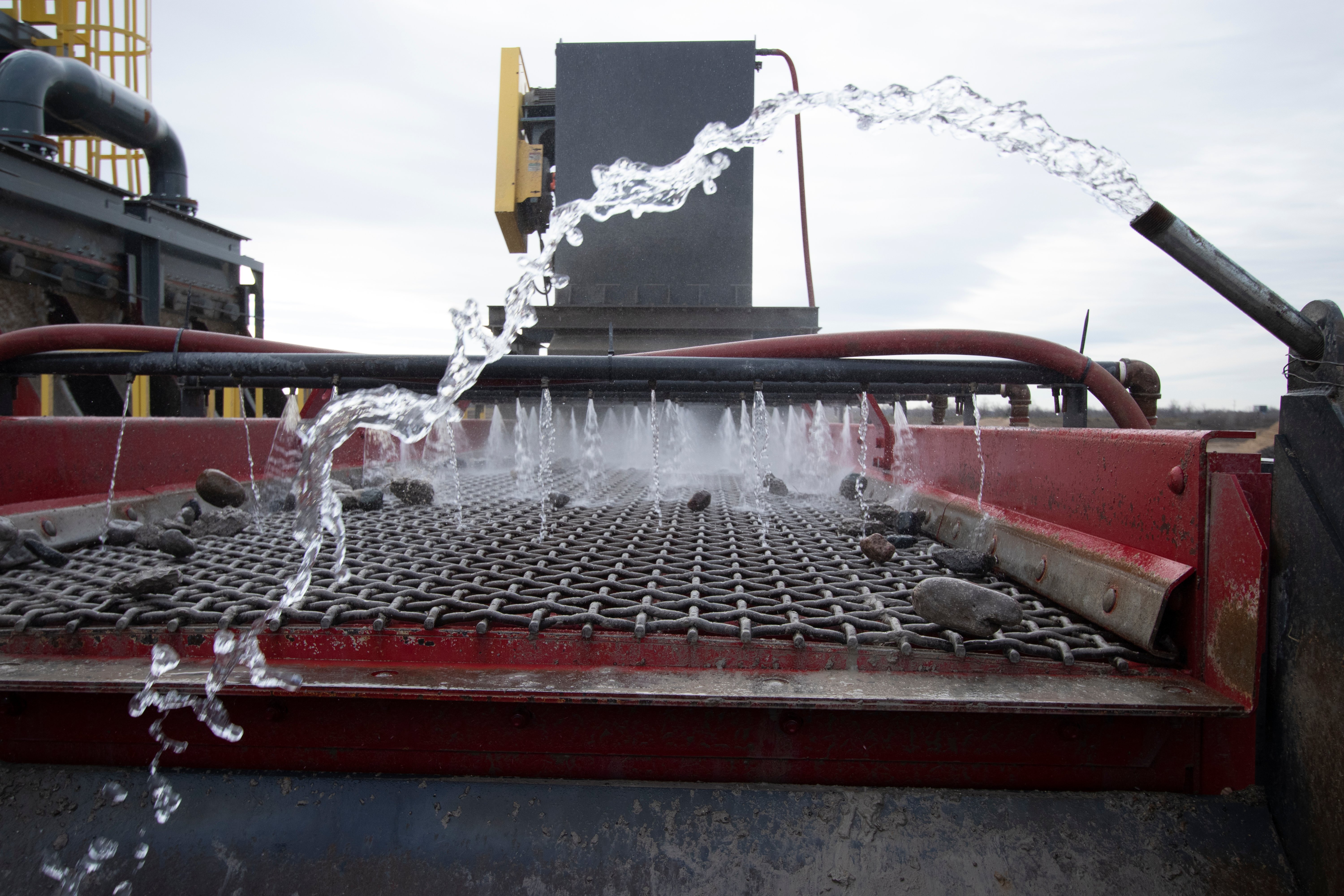
Vibrating wash screens
Like their name implies, vibrating wash screens are vibrating screens equipped with spray bars that rinse the material as it moves along the deck of the screen. Generally, 3 to 5 gallons per minute or .7 to 1.1 mᶾ/hour of water for each ton per hour of solids feed to a wash screen is recommended to be applied on this equipment.
While this may not provide suitably clean aggregate, vibrating wash screens are often used in conjunction with other washing/scrubbing equipment to provide a final rinsing of the liberated contaminants from the sound rock or ore.
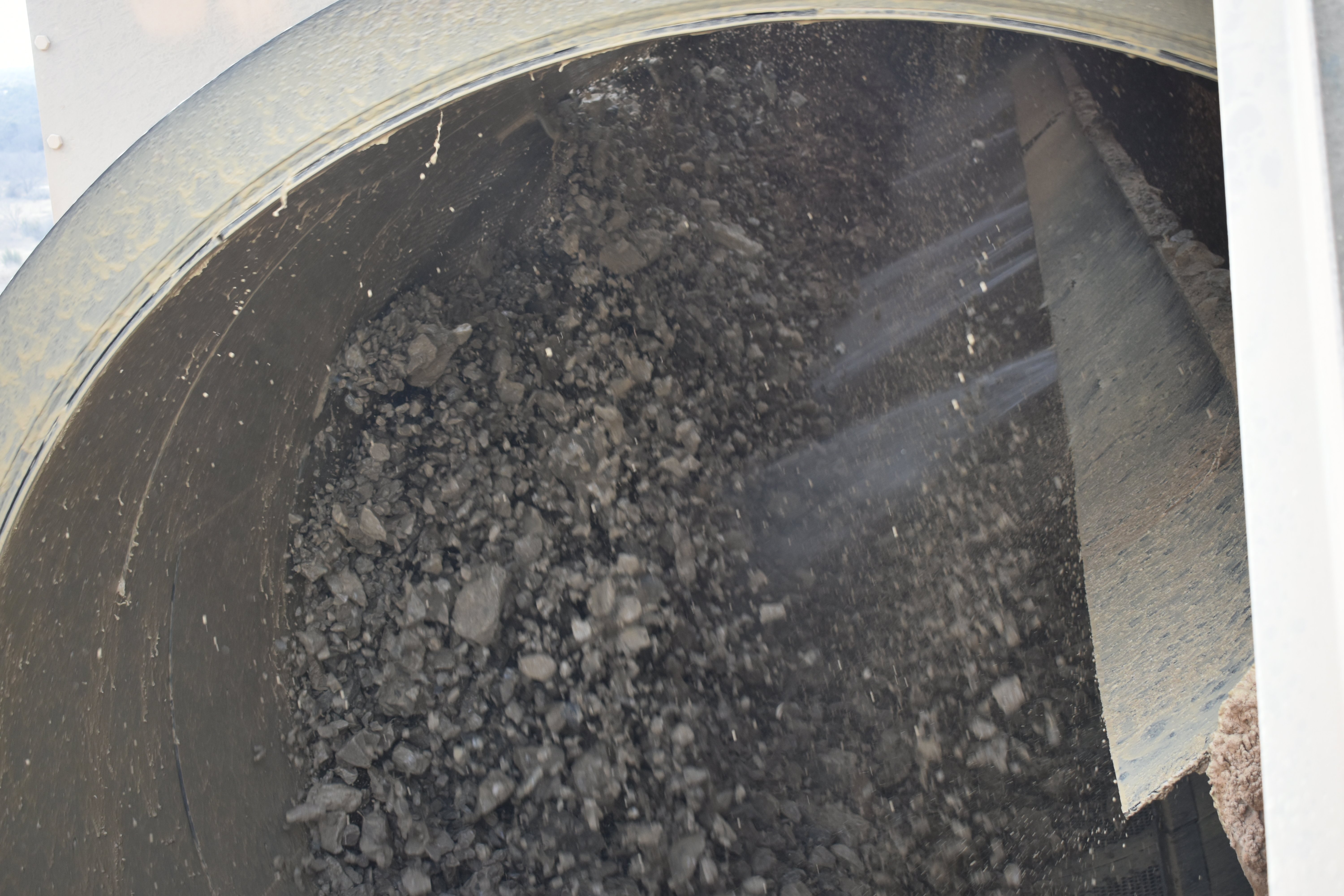
Rotary scrubbers or barrel washers
Rotary Scrubbers, also called barrel washers, offer low to medium scrubbing to remove water-soluble contaminants from rock or ore. The feed material is mixed with water inside the rotating drum and is constantly lifted and dropped on itself as it moves through the rotary scrubber. This provides the material-on-material attrition needed to liberate soluble deleterious contaminants.
These machines are able to handle large feed sizes at high capacities; however, Rotary Scrubbers tend to be more costly than the other options listed here.
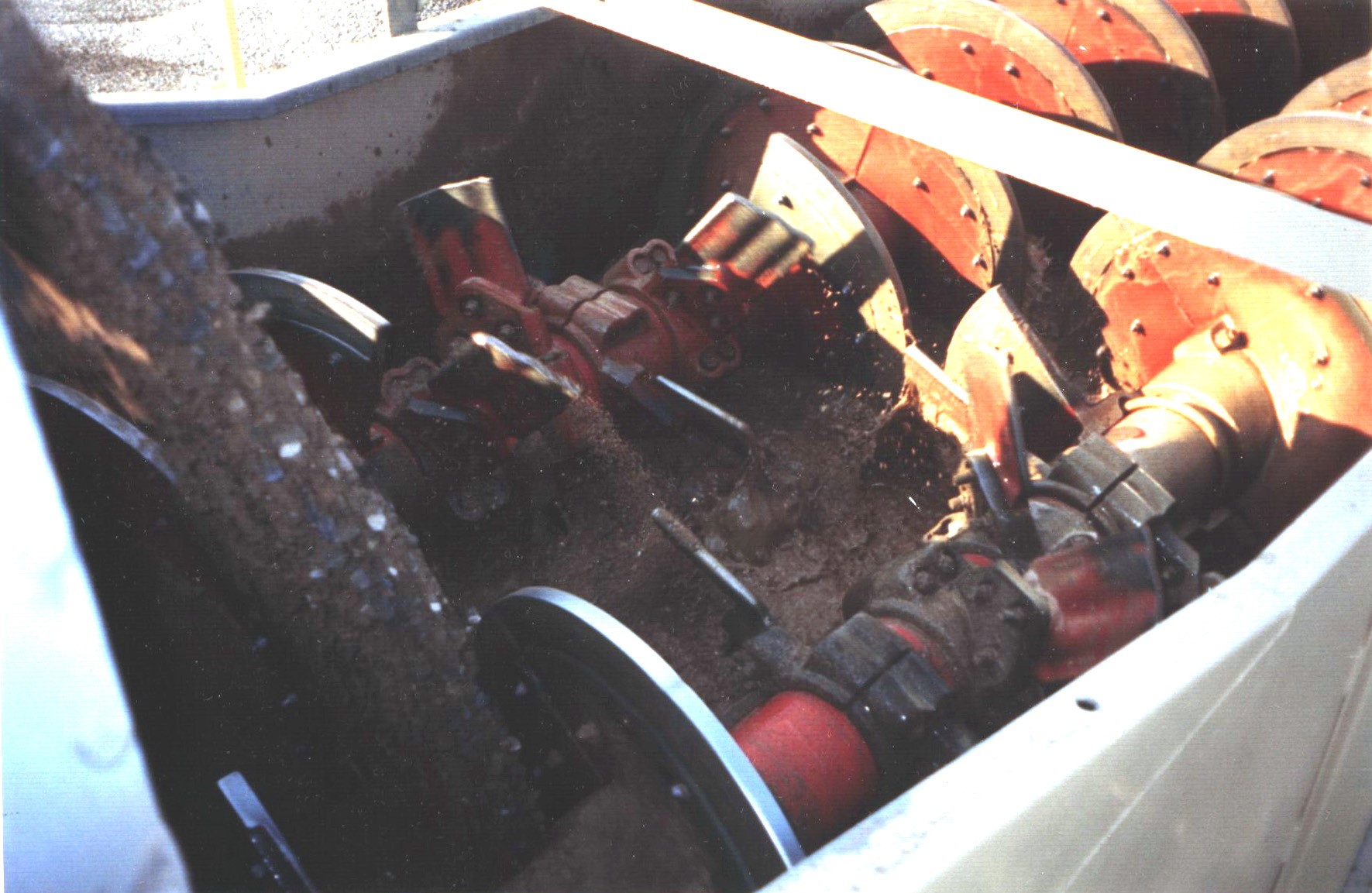
Coarse Material Washers
Coarse Material Washers are used for washing rock and ore that has mud and soluble clay contaminants. They are a low-cost washing option for when a vibrating wash screen alone just won't cut it.
These machines are typically used for the removal of soluble clays, crusher dust, fines and lightweight vegetation. They have also been used to float out lightweight organic material in construction and demolition recycling applications to make a cleaner fill material comprised of the crushed rock, brick and concrete that’s a salable product.
Standard Coarse Material Washers for washing and scrubbing rock are installed on a 15-degree slope. They are typically fed a desanded feed by a conveyor or chute that discharges directly into the washer tub of the machine. Paddles on the feed end of a rotating shaft provide the material-on-material attrition necessary to remove the contaminants, while screw flights on the remainder of the shaft carry the material toward the discharge. Dissolved contaminants overflow a weir with water that is added into the Coarse Material Washer.
It is recommended that a rinsing screen be installed after the Coarse Material Washer to wash away residual the contaminants that have not been liberated from the rock.
EIW Coarse Material Washers also feature a trash removal option for eliminating lightweight, floatable debris, such as sticks, roots and coals. These Coarse Material Washers are typically installed at a slightly steeper angle and feature a rising current of water to help float vegetation and lightweight debris via the adjustable overflow weir at the back of the machine. Coarse Material Washers meant for this type of application may also counterflow the feed for optimum debris removal.
Note that Coarse Material Washers for debris removal may also require additional water.
.jpg)
Blade Mills
Blade Mills are similar in appearance to Coarse Material Washers but are fundamentally different. First, they are installed at a relatively flat angle between 0 and 5 degrees. Additionally, the overflow weir is not used, so all material and water that enter the Blade Mill are discharged opposite of the incoming feed entry. Because of this, a rinse screen is required to wash away the contaminants discharged from the Blade Mill with the sound material.
Another key difference between Blade Mills and Coarse Material Washers is the screw shaft. While Coarse Material Washer shafts feature paddles at the feed end and screw flights along the remainder of the shaft, Blade Mills feature a more aggressive configuration of alternating paddles and flights.
A third difference is in the higher volume a Blade Mill can process compared with a Coarse Material Washer. Blade Mills have achieved capacities 34-50% greater than Coarse Material Screw Washers.
Blade Mills are typically used to scrub 1-1/2” minus material that has low to medium plasticity clay contaminants. Blade Mills in some plant circuitry are used to wash an all-in rock and sand feed, so long as the top size feed is limited to the machine’s maximum feed size.
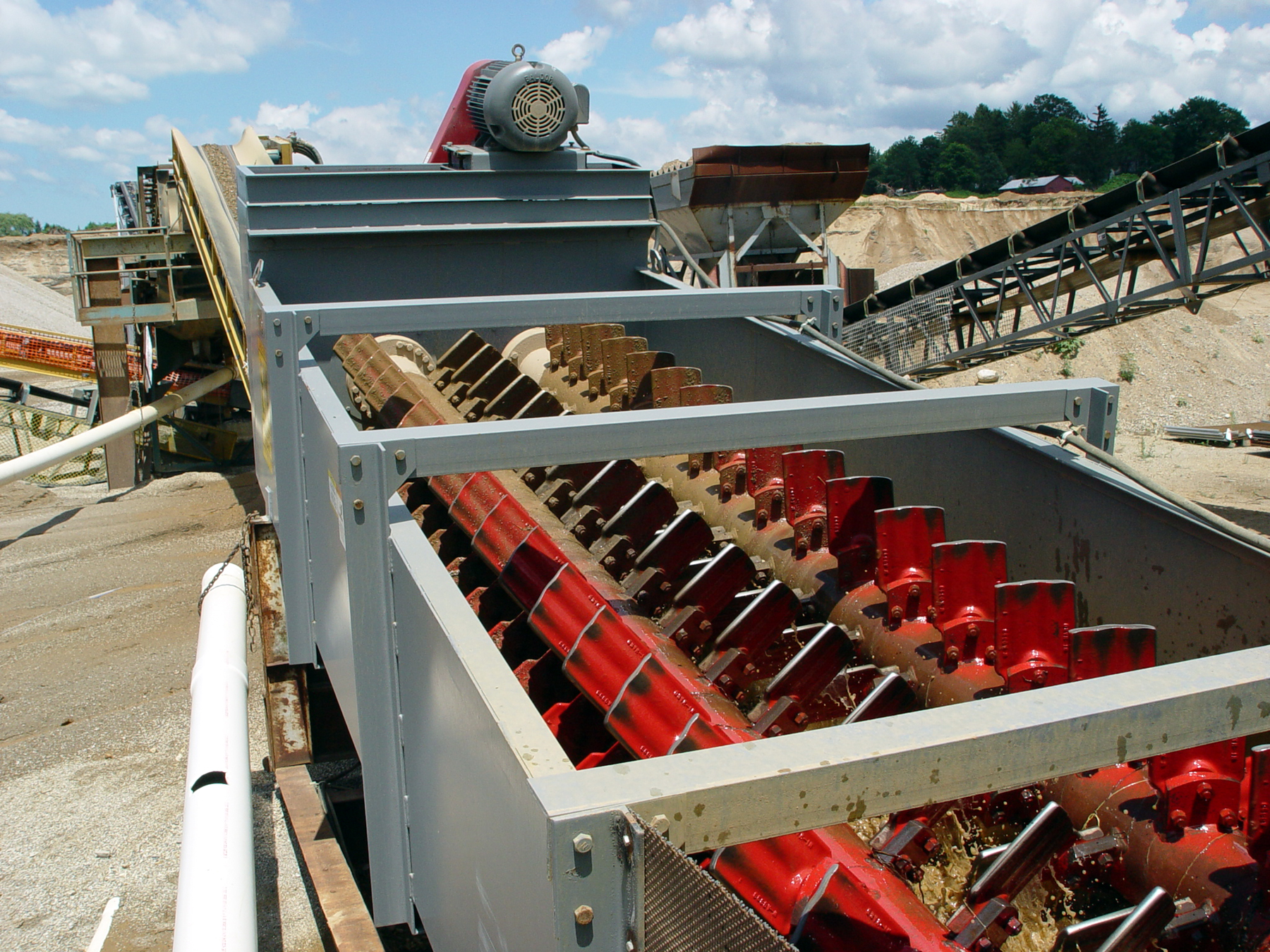
Sol-Clay Washers
Sol-Clay Washers are intended to handle medium-duty scrubbing between that of a Coarse Material Washer and a Log Washer. They remove stubborn soluble clays, crusher dust and fines, and are selected after lab testing or based on a customer’s previous experience.
These machines look like a Log Washer and are often referred to as a medium-duty Log Washer. But while they also feature two full paddle shafts, Sol-Clay Washers are not capable of accepting quite as big of feed as Log Washers and they require less horsepower per ton of material than Log Washers.
Pre-screening the feed is required ahead of the Sol-Clay Washer to keep out oversize and sand, and a rinsing screen is recommended after to provide a final wash of any films and slimes.
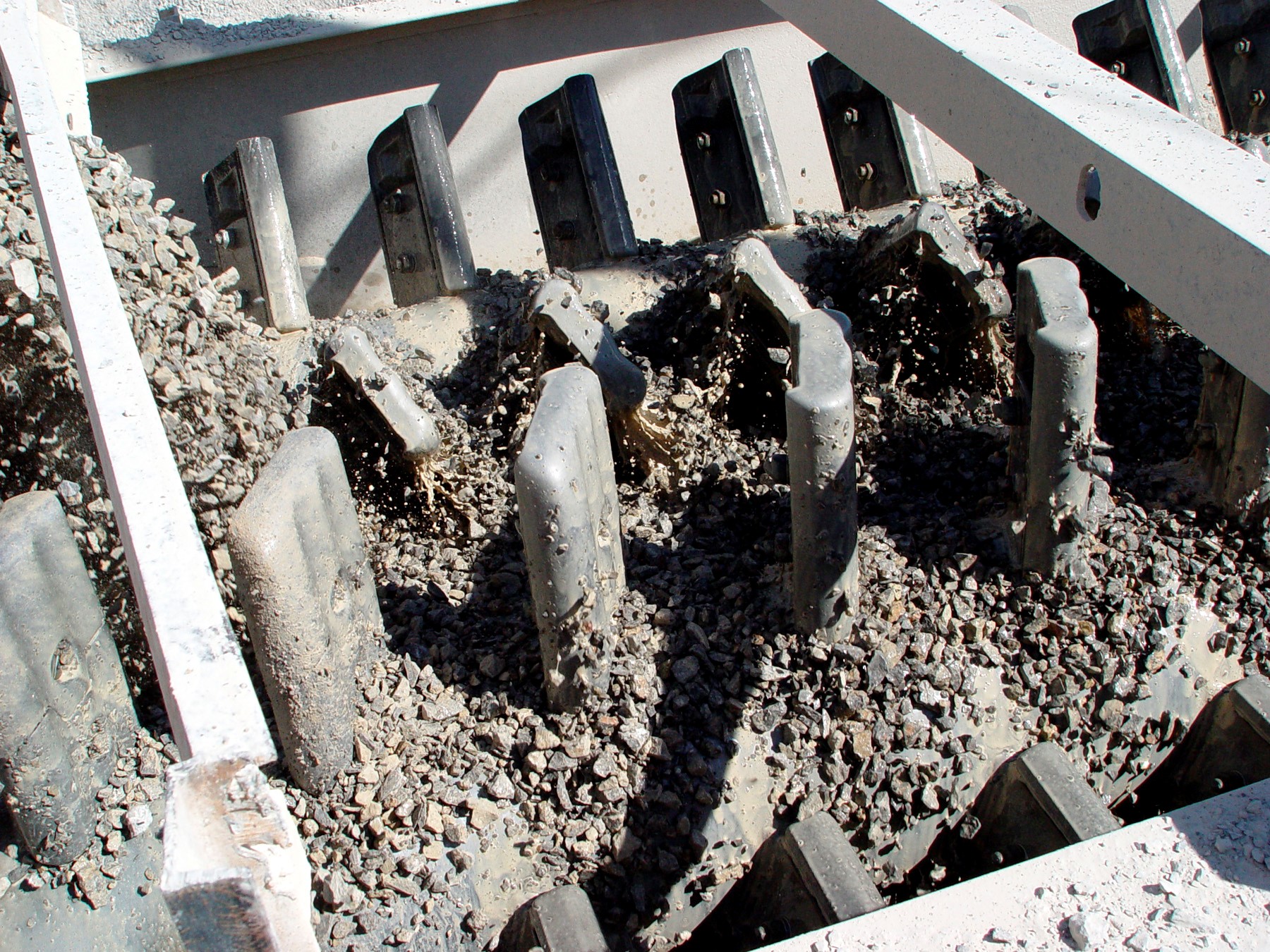
Log Washers
Log Washers provide heavy-duty scrubbing of tough, in-soluble, sticky clays that can’t be removed by a washing screen. Generally, a rock feed having up to 10% to 15% plastic clay can produce a clean coarse aggregate.
These units feature twin shafts equipped with massive paddles for facilitating the material-on-material attrition necessary for removing contaminants. As with many of the other machines listed, a rinsing screen is recommended to be placed after the Log Washer to remove any films and slimes from the final product.

Using one of the equipment options outlined above, producers can ensure their coarse material products are free of contaminants to meet required specifications.



